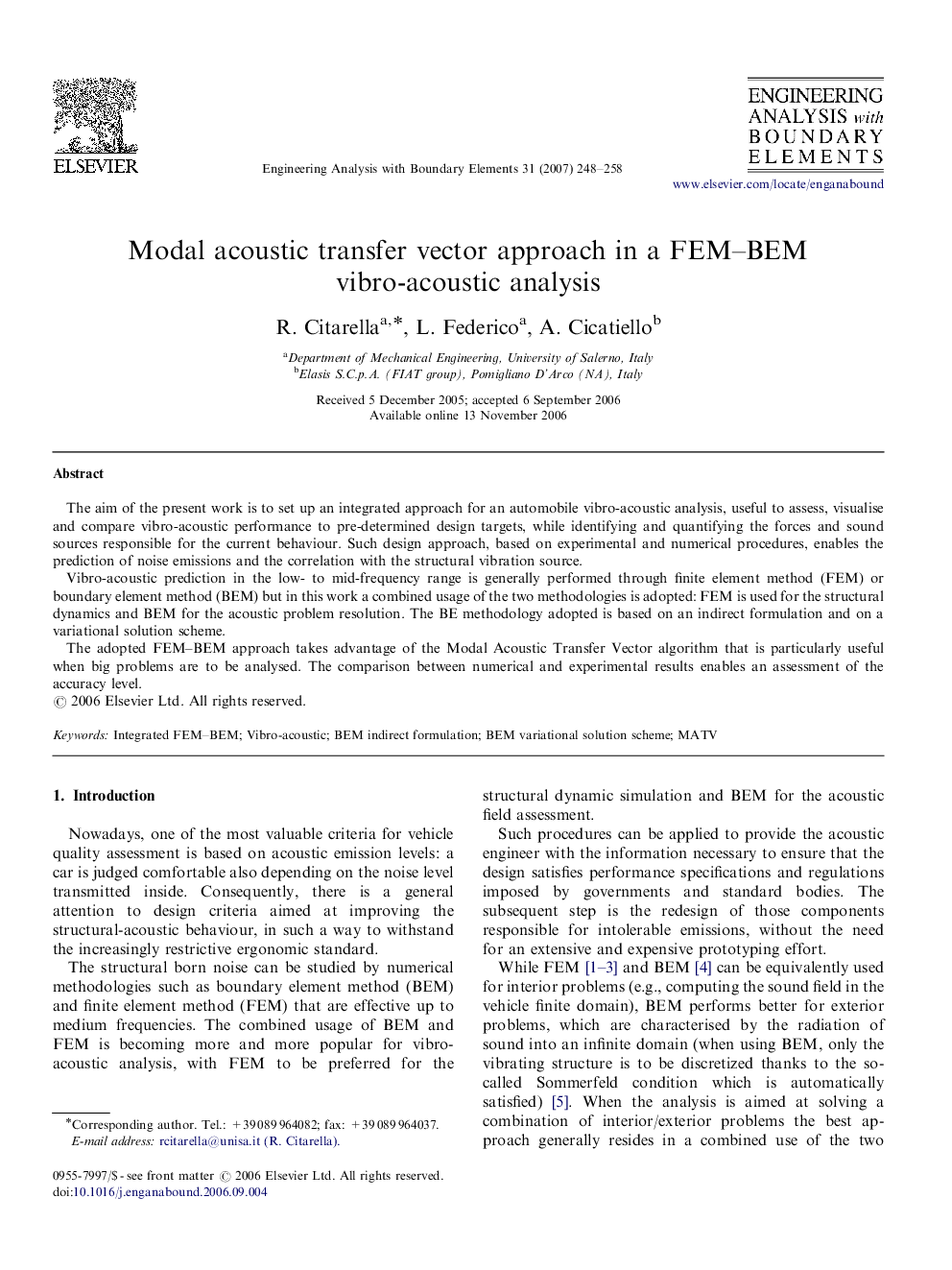| Article ID | Journal | Published Year | Pages | File Type |
|---|---|---|---|---|
| 513587 | Engineering Analysis with Boundary Elements | 2007 | 11 Pages |
The aim of the present work is to set up an integrated approach for an automobile vibro-acoustic analysis, useful to assess, visualise and compare vibro-acoustic performance to pre-determined design targets, while identifying and quantifying the forces and sound sources responsible for the current behaviour. Such design approach, based on experimental and numerical procedures, enables the prediction of noise emissions and the correlation with the structural vibration source.Vibro-acoustic prediction in the low- to mid-frequency range is generally performed through finite element method (FEM) or boundary element method (BEM) but in this work a combined usage of the two methodologies is adopted: FEM is used for the structural dynamics and BEM for the acoustic problem resolution. The BE methodology adopted is based on an indirect formulation and on a variational solution scheme.The adopted FEM–BEM approach takes advantage of the Modal Acoustic Transfer Vector algorithm that is particularly useful when big problems are to be analysed. The comparison between numerical and experimental results enables an assessment of the accuracy level.
